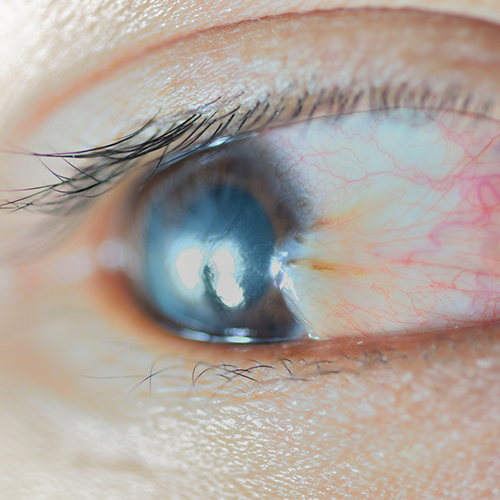
Have you noticed a wedge-shaped bump on your eye? Are there bumps on or around your eye?
When this happens, it usually means that you have a condition called a pterygium. The wedge-shaped bumps usually start in the white part of your eye (known as the sclera) and can go into the cornea.
Pterygium is also known as “surfer’s eye.” You do not have to be a surfer to develop a pterygium. You do have to spend long periods of time in the sun, especially on the water.
Water reflects UV rays from the sun, which increases your chances of developing a pterygium. Keep reading to learn more about pterygium!
What is Pterygium?
A pterygium is when a wedge-shaped bump develops on your eye. It is a benign growth, but it can permanently disfigure your eye. They can be uncomfortable and may result in blurry vision.
What Causes Pterygium?
While being exposed to UV rays is the main cause of a pterygium or pterygia developing, there are other causes. These can include exposure to dust and wind or having dry eyes.
You’re most likely to develop a pterygium if you’re around the ages of 30-50 years old. It is not common for children to develop it. If you are fair-skinned with light-colored eyes, you may also be more likely to develop a pterygium as well.
What are the symptoms connected to having Pterygia?
Most patients develop pterygia on the part of their eye or eyes that’s closest to their nose. Some patients do develop it on the part of their eye that’s closest to their ears.
It is possible for you to develop pterygia in one or both of your eyes. Patients with a mild case of pterygium might not have any signs or symptoms. If this is the case, they will not need treatment.
If you have a larger pterygium or it’s still growing, you can experience symptoms like:
- Itchiness
- A gritty feeling
- Burning
- A foreign body sensation of something being stuck in your eye
- Inflammation that turns your eyes red
If your pterygium develops in your cornea, then the front of your eye can look like an odd shape. This may cause you to develop astigmatism. You may also develop more intense visual aberrations that impact your vision.
How do you treat Pterygium?
How to treat a pterygium depends on its size, if it’s still growing, and what symptoms you have. Regardless of these things, you need to monitor it. This is to make sure you do not scar your eye or cause vision loss.
If you have a small pterygium, your doctor could prescribe a mild eye drop with steroids or a lubricant. These will help reduce swelling and any redness.
Another treatment option is using contact lenses. Contact lenses can cover the pterygium. They can also protect it from getting dry or being exposed to more UV rays.
If your pterygium bothers you enough, surgery is also an option. There are different surgical options that your surgeon will discuss with you.
Do you think that you may have a pterygium? Schedule an appointment at Omaha Eye & Laser Institute in Lincoln, NE with one of our ophthalmologists!





